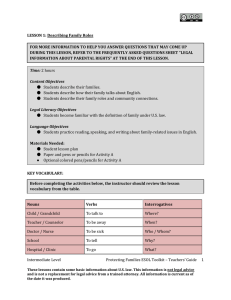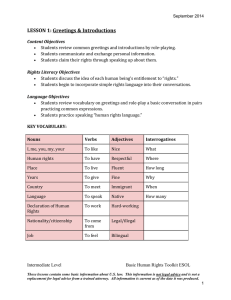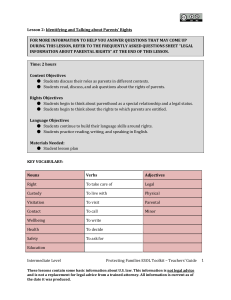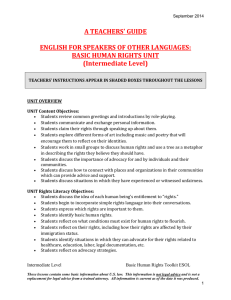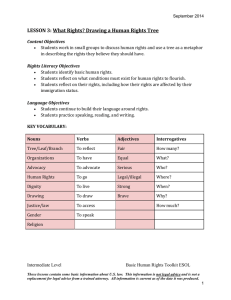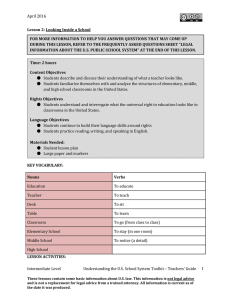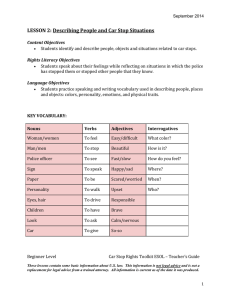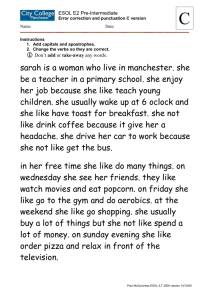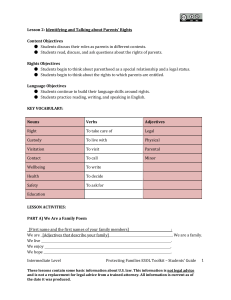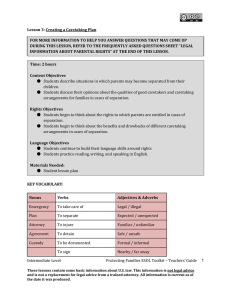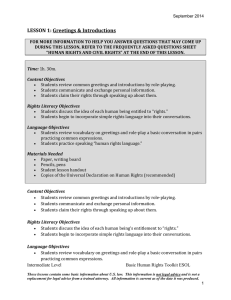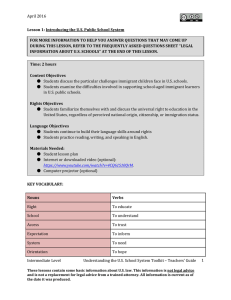April 2016 Students describe their families. ●
advertisement
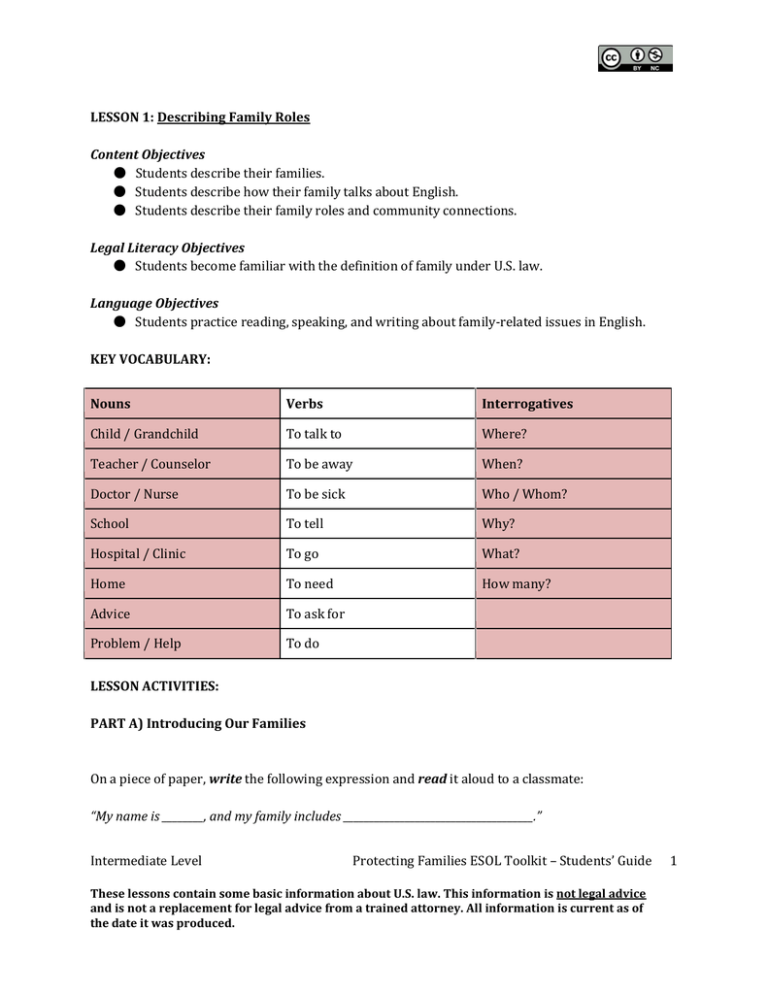
April 2016 LESSON 1: Describing Family Roles Content Objectives ● Students describe their families. ● Students describe how their family talks about English. ● Students describe their family roles and community connections. Legal Literacy Objectives ● Students become familiar with the definition of family under U.S. law. Language Objectives ● Students practice reading, speaking, and writing about family-related issues in English. KEY VOCABULARY: Nouns Verbs Interrogatives Child / Grandchild To talk to Where? Doctor / Nurse To be sick Who / Whom? Teacher / Counselor School Hospital / Clinic Home Advice Problem / Help LESSON ACTIVITIES: To be away To tell To go To need To ask for When? Why? What? How many? To do PART A) Introducing Our Families On a piece of paper, write the following expression and read it aloud to a classmate: “My name is ________, and my family includes _____________________________________.” Intermediate Level Protecting Families ESOL Toolkit – Students’ Guide These lessons contain some basic information about U.S. law. This information is not legal advice and is not a replacement for legal advice from a trained attorney. All information is current as of the date it was produced. 1 April 2016 Ex: My name is Khalid, and my family includes my mother and my two daughters. Then draw and label a picture that represents your family: Ex: Zafrani Family Me, Khalid Selma, my daughter Lina, my mother Ines, my daughter Part B) English and My Family Somewhere on your drawing, write in English or your native language three thoughts (e.g., my mother is a doctor at home but can’t be one here because she does not speak English; my sister got into college because she learned English; etc.) or feelings (e.g., I am proud of my father for coming here even when he can’t speak English; I am sad not to speak English as well as my sister; etc.) you or members of your family have about learning or using English. PART C) Describing Roles as Parents In small groups, fill out the following chart, listing where you go, whom you talk to, what you do, and what you need in the following three situations, using vocabulary from the lesson and words you know. ● When your child is sick. ● When your child is having a problem in school. ● When your child is staying home while you are away for a few days. WHEN my child: WHAT my child needs: WHERE I go: WHOM I talk to: WHAT I do: is hungry. to eat home my family cook a meal is sick. Intermediate Level Protecting Families ESOL Toolkit – Students’ Guide These lessons contain some basic information about U.S. law. This information is not legal advice and is not a replacement for legal advice from a trained attorney. All information is current as of the date it was produced. 2 April 2016 is having a problem in school. is staying home while you are away for a few days. PART D) Reflections Take a moment to reflect on the lesson, what you have learned, and the challenges you experienced with the activities, as well as what you enjoyed about them. Then, as a class, reflect on how your families are respected or not in society and how your families are affected by immigration status and use of English and other languages. Feel free to communicate in your native language, as necessary and possible. Intermediate Level Protecting Families ESOL Toolkit – Students’ Guide These lessons contain some basic information about U.S. law. This information is not legal advice and is not a replacement for legal advice from a trained attorney. All information is current as of the date it was produced. 3
